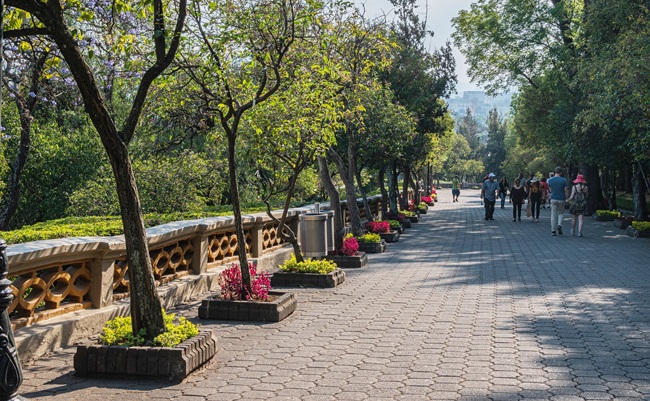It’s important to notice this phenomenon has started a process of gentrification in some neighborhoods of the city.
The number of digital nomads has grown exponentially around the world since the start of the Covid 19 pandemic in 2020. While many people who had digital jobs were already used to working from home, many others were not required to return, so they realized they could be doing it anywhere in the world. It’s for this reason that it became important to look for more affordable housing options.
Mexico City began to attract many digital nomads at the beginning of 2021. Health security measures started to lift, and it became a hot spot, especially for Americans and Europeans. Few were looking for a hotel in Mexico City, but rather a place to live for a few months, or sometimes indefinitely.
It’s important to notice this phenomenon has started a process of gentrification in some neighborhoods of the city. Prices have risen in housing and restaurants, especially in areas where foreigners have gathered, mainly in the Roma and Condesa neighborhoods. Mexico City is one of the most expensive cities to live in for Mexicans, but very convenient for people from all over the world.
How is Mexico City becoming a top spot for digital nomads?
Mexico City is a great city in more ways than one
Mexico City is not only great in size. The wide diversity of activities it offers can overwhelm anyone. Its history begins in March 1325, long before any of the capital cities of the Americas. The Aztecs settled there on that date and taken by Hernan Cortes in 1521. Thanks to this extensive history, the diversity in culture is very broad. In the city itself there are more than seven archaeological sites, 173 museums, more than 40 art galleries, 164 theaters, and countless other activities to really get to know Mexico and its capital.
Mexico is also the seventh country with the most UNESCO World Heritage Sites. Five of them are located in Mexico City: the house and studio of architect Luis Barragan; the Historic Center of the city; Xochimilco; the Central Campus of the National Autonomous University of Mexico (UNAM); and Mixquic.
The size of Mexico City is so large that the entire southern part of the city is a vast forest and natural parks that are quite far from the center of the city. One of the largest urban parks in the world is located just off one of the main streets. In it, the only royal castle in America overlooks from a small hill where you can see in the distance the Angel of Independence, the country’s independence monument.
Cultural diversity: from the pre-Hispanic to the modern
Another reason why Mexico City attracts the attention of digital nomads is its cultural diversity. For instance, in Paseo de la Reforma, one of the main streets of Mexico City there are endless things to get to know. This street goes from downtown, through the Angel of Independence and the new skyscrapers, Chapultepec Castle, exclusive residential areas, to one of the main highways into the State of Mexico. It’s a very touristic area mainly because of Chapultepec Park, one of the largest urban parks in the world (more than twice the size of Central Park in New York) and the National Museum of Anthropology.
Within Chapultepec Park there are many museums to visit, including the Museum of Anthropology, Tamayo Museum, Museum of Natural History, Children’s Museum, and the National Museum of History inside the castle. Officially named Chapultepec Castle, it was home to one of Mexico’s few emperors, and the museum tells the history of the country. On the other hand, the Museum of Anthropology is one of the most visited museums in the city. It features archaeological artifacts from all over Mexico and a central courtyard with an astounding column fountain that supports a platform measuring 82.06 by 54.42 meters (269 by 178.4 feet).
Mexico City’s historic center has one of the largest plazas in the world. It’s called El Zócalo and measures 46,800 square meters (503,751 square feet). The plaza is home to the Metropolitan Cathedral, the National Palace (Mexico’s seat of government), the City Hall Palace (Mexico City’s seat of government), and in the northeast corner the Templo Mayor, one of the most important archaeological sites.
Amazing travel base
One of the main reasons to be a digital nomad is to be able to travel and see new places (perhaps the main reason). Mexico City has one of the most important airports in the region. You can have a direct flight to many places in Europe, United States, Asia, and South America, which makes it an excellent connection point to remote countries as well. To travel within the country there are low-cost airline options, in addition to a very important road network that can be traveled by car or bus very easily. Its privileged location makes Mexico City an excellent base to get to know and travel around the world.






















































































































































































































